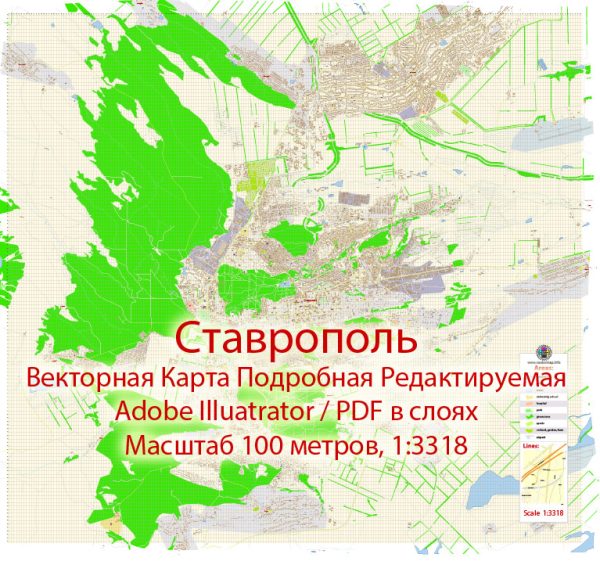Stavropol, a city in southwestern Russia, has a rich history of urban development that dates back to the late 18th century. Here is a brief overview of key historical points in the urban development of Stavropol:
- Foundation and Early Years (1777-1800):
- Stavropol was founded in 1777 by the Russian Empress Catherine the Great. The city’s name is derived from the Russian words “stav” (ста́в), meaning “mainstay” or “prop,” and “polye” (по́ле), meaning “field.”
- Initially established as a fortress to protect the southern borders of the Russian Empire from nomadic raids, Stavropol quickly grew into a significant administrative and economic center.
- 19th Century:
- During the 19th century, Stavropol continued to develop as an important regional hub. It became the administrative center of the Stavropol Governorate in 1847.
- The city’s growth was influenced by its strategic location on the northern slopes of the Caucasus Mountains, fostering trade and cultural exchange between the Russian Empire and the Caucasus region.
- Soviet Era (20th Century):
- Stavropol played a role in various historical events during the Soviet era. It was briefly the capital of the North Caucasus Krai in the early 1920s.
- The city underwent industrialization and urbanization during the Soviet period, with the development of industries, infrastructure, and residential areas.
- World War II:
- Stavropol, like many other cities in the Soviet Union, experienced the impact of World War II. The city played a role in supporting the war effort, contributing both manpower and resources.
- Post-Soviet Period (1991-Present):
- Following the dissolution of the Soviet Union in 1991, Stavropol became part of the Russian Federation. The city faced the challenges of transitioning to a market economy and adapting to new political and economic realities.
- Urban development continued, with modernization projects, improvements in infrastructure, and the expansion of residential and commercial areas.
- Cultural and Architectural Heritage:
- Stavropol boasts a mix of architectural styles reflecting its diverse history. There are landmarks, churches, and buildings that showcase elements of Russian, Soviet, and Caucasian architectural influences.
- Economic Significance:
- Stavropol remains an important economic center, with a focus on agriculture, industry, and trade. The city’s economy is diverse, including food processing, machinery production, and the production of construction materials.
- Cultural and Educational Institutions:
- Stavropol is home to cultural and educational institutions, including museums, theaters, and universities, contributing to the city’s cultural vibrancy and intellectual life.
Overall, Stavropol’s history of urban development reflects its strategic importance, economic growth, and cultural diversity over the centuries. The city continues to evolve, embracing its historical legacy while adapting to contemporary challenges and opportunities.


 Author: Kirill Shrayber, Ph.D.
Author: Kirill Shrayber, Ph.D.